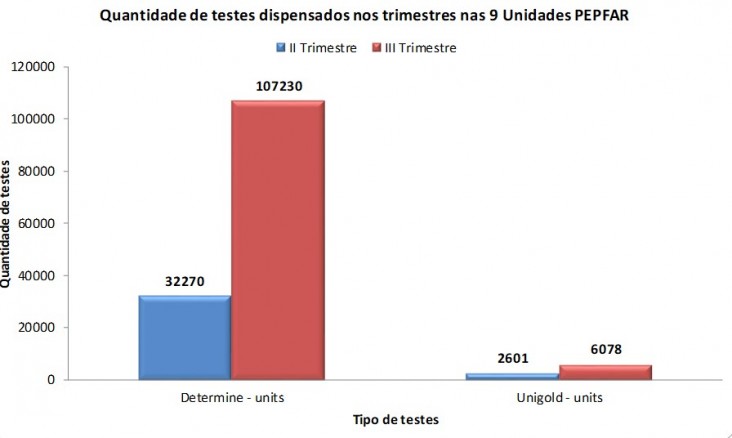Speeches Shim
In Angola's Luanda province, health centers were experiencing stock level challenges. The National Institute for the Fight Against AIDS (INLS) had been prioritizing distribution of anti-retroviral medicines (ARVs) and rapid test kits (RTKs) based on geographic coverage rather than on caseload information. A monitoring and evaluation review of caseload data showed that Luanda province was receiving fewer ARV and RTKs than was required to meet the need.
Continuous, reliable supply of quality health products is a priority for the Government of Angola. To that end, the USAID Global Health Supply Chain Program-Procurement and Supply Management (GHSC-PSM) project is supporting the Ministry of Health to strengthen the national supply chain management system for health commodities through various initiatives focused on tying data to distribution.
GHSC-PSM worked with the INLS to  reinforce the benefits of distributing commodities based on quantification results and real need rather than geographic coverage. The project then signed a technical memo with INLS based on this quantification data, noting that Luanda province accounts for approximately 44 percent of the country’s ARV and RTK needs, while noting that the PEPFAR-supported SDPs in the province account for 29 percent of the total caseload and agreeing that distribution should therefore be based on this quantified caseload.
In addition to ensuring greater accuracy in distribution, quantified caseloads are also being used to inform the national allocation of commodities to the Luanda Provincial Depot, thus leading to better supply coverage.

As seen in the graph, from one quarter to the next, there were significantly higher HIV rapid test kit (RTK) distributions to Luanda based on their 44 percent national need.
This quantification data, augmented by the GHSC-PSM-supported rollout of the “Mapa de Farmácia” – a new tool used to register the number of patients enrolled per regimen and the quantity of ARVs dispensed to patients per month within the updated, “National Standard Operational Procedures for Pharmaceutical Management of HIV Products” used to track consumption data, is helping INLS to make evidence-based logistics and operational decisions.
GHSC-PSM also focused efforts on improving transport availability to further ensure reliable supply in Luanda province. After conducting a transportation and routing analysis, in FY18 the project launched an ARV, RTK, and condom distribution pilot project in Luanda province to demonstrate the effectiveness and reliability of outsourcing commodity distribution. As part of the pilot, in collaboration with the Provincial Government of Luanda (GPLS), the project is using a local service provider to support monthly deliveries based on consumption data. The ARV tracer product stockout rate at PEPFAR-supported SDPs in Luanda went from 20 percent in Q3 in FY18 to 0 percent in Q4 as a direct result of the distribution pilot.
Under the leadership of GPLS, and with strong coordination between INLS and GHSC-PSM, these initiatives are yielding results in PEPFAR-supported facilities and ensuring stock levels are maintained as the country strives for continuous ARV and RTK availability.
READ MORE
Related News
- As COVID-19 loomed, Angola conducted an essential on-line quantification exercise to support the HIV/AIDS program
- USAID’s Health for All project improves quality of care through HNQIS formative supervision
- USAID’s Health for All project continues to provide skills and tools to increase laboratory efficiency on malaria diagnosis in Angola

Comment
Make a general inquiry or suggest an improvement.